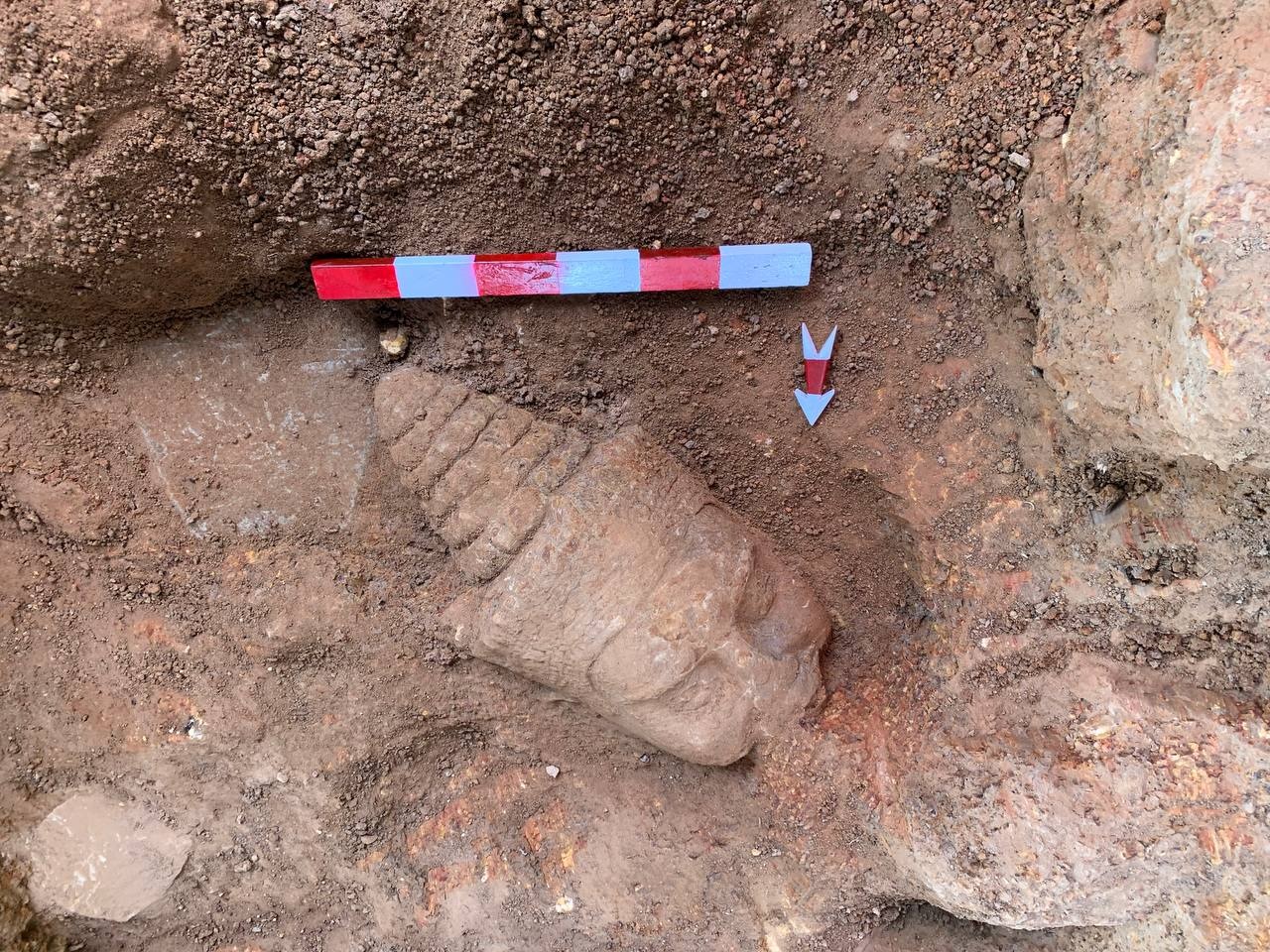Archaeologists from Cambodia’s national heritage authority (APSARA) have discovered the long-lost missing head of a Deva statue from the Victory Gate of Angkor Thom.
The Victory Gate is one of five gates to the city of Angkor Thom, the last capital of the Khmer Empire.
Angkor Thom was founded in present-day Cambodia during the late 12th century by King Jayavarman VII, the first king of the empire devoted to Buddhism.
His reign is considered a golden period in Khmer rule, introducing a welfare state for the Khmer people and a program of construction projects that included both public works and monuments.

The Ayutthaya Kingdom sacked Angkor Thom, prompting the Khmers to relocate their capital southeast to Phnom Penh. The city continued to decline throughout the 16th century and was largely abandoned by the early 17th century.
According to the archaeologists, the head belongs to the 23rd Deva statue, one of 54 other deva statues who watched over visitors passing through the city gate.
Access to the gate was provided by a causeway crossing over a moat, flanked on both sides by 54 devas and 54 asuras (demons), symbolising the Hindu myth of the Churning of the Ocean of Milk.
According to a press statement by APSARA, the deva head is made from sandstone and has been found relatively intact, however, the head is missing the nose and upper lip.
A representative from APSARA said: “The discovery of the Deva statue head adds to the rich archaeological heritage of Angkor Thom and provides valuable insights into the history and craftsmanship of the ancient Khmer civilisation.”
Header Image Credit : APSARA
Sources : APSARA







